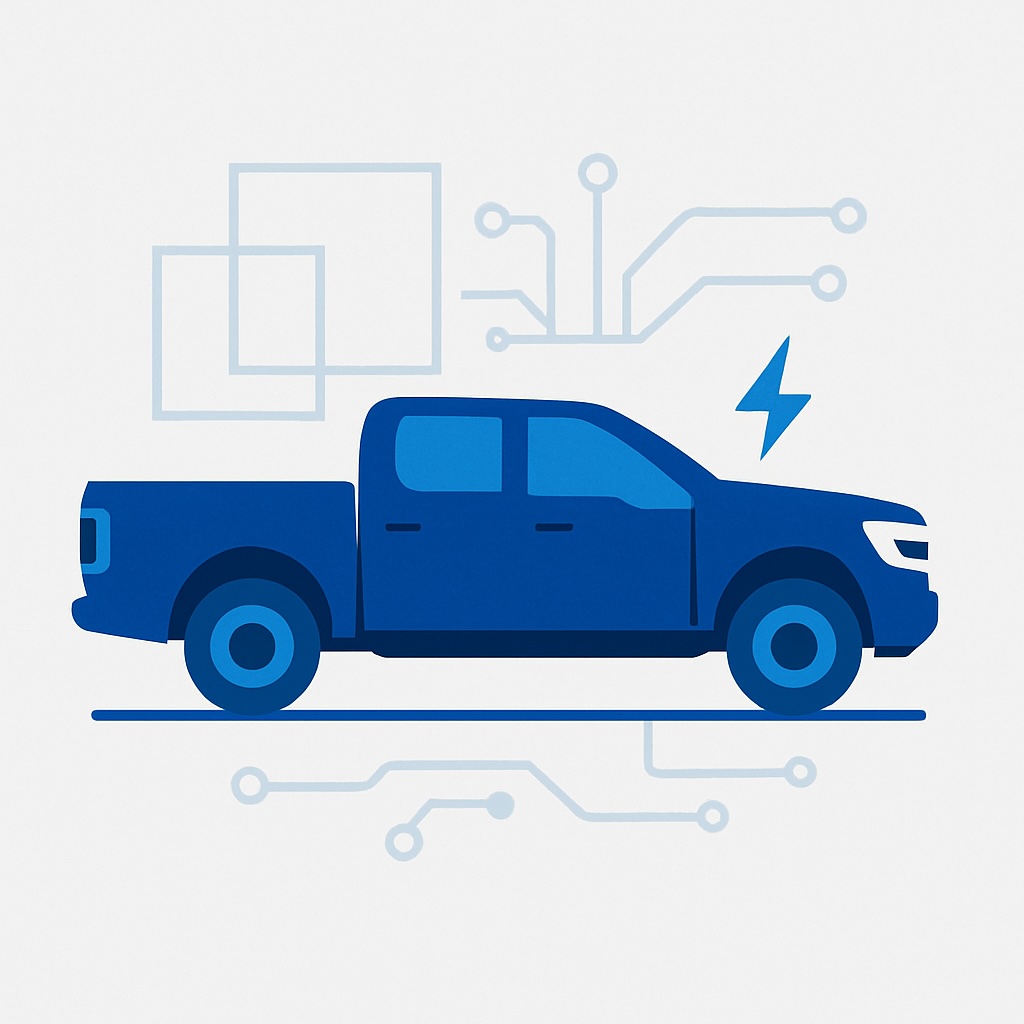
Ford just officially announced their Skunkworks project yesterday, finally going public with what had been Silicon Valley’s worst-kept secret. I caught a fascinating discussion about it shared by Alexandra Merz (@TeslaBoomerMama) on X, and as someone who’s been driving electric for the past five years (and yes, currently behind the wheel of a Lightning), I had to share some thoughts. The video features Alexandra Merz, a Tesla retail investor and analyst who writes extensively about EV industry dynamics, along with other analysts dissecting Ford’s now-public EV strategy. The picture they paint is both exciting and sobering.
The Talent Tells the Story
First, let’s talk about who Ford has assembled in California. This isn’t your typical Detroit engineering team. Ford has basically raided Silicon Valley and the EV startup world to build this unit. Doug Field, who’s running the show, came from Apple where he led their Titan EV project. Before that? He was senior VP of engineering at Tesla for five years. Alan Clark, their head of advanced EV development, spent twelve years at Tesla working on every single model from the original Roadster through the Cybertruck prototype.
The numbers are striking. Out of roughly 300 employees in Skunkworks, about 39 came from Tesla, 24 from Apple, and 22 from Rivian. Over 75% of the senior people have backgrounds at companies like Tesla, Apple, Rivian, Lucid, Google, or Microsoft. Ford even acquired an entire company, Automotive Power, just to get their power management expertise and 149 employees.
This isn’t window dressing. You don’t poach this level of talent unless you’re serious.
The $30,000 Question
What’s Skunkworks actually building? A profitable EV pickup truck targeting a $30,000 price point. According to the discussion, prices would range from the high 20s to high 40s after federal tax credits. The target launch is 2027. And here’s the kicker: it has to be profitable, or Ford won’t build it.
As someone who paid considerably more for my Lightning, I find this both encouraging and concerning. Encouraging because affordable EVs are exactly what we need for mass adoption. Concerning because Ford is currently losing about $47,000 on every EV they sell. That’s not a typo. Their EV division is projected to lose $5.5 billion this year.
Farley Gets It
The most interesting part of the discussion centered on Jim Farley’s evolution on EVs. Back in 2022, he was predicting Ford would sell 600,000 EVs by 2023. They sold 72,000. But rather than retreating, Farley seems to have had an epiphany. The analysts noted Ford now compares itself more to BYD than Tesla.
Merz and her colleagues highlighted a quote from Farley at the Aspen Ideas Festival this June that stopped me cold: “If we don’t make this EV transition, Ford is not going to make it.”
That’s not hedging. That’s not corporate speak. That’s a CEO acknowledging an existential threat.
The FSD Wild Card
The discussion took an interesting turn when they debated whether Ford might license Tesla’s Full Self-Driving technology. One analyst argued Ford is too focused on just building an affordable car to worry about FSD. The counterargument was compelling though. If you’re trying to sell a $30,000 vehicle with razor-thin margins, adding FSD as an option could literally double your profit per vehicle.
Farley has said Ford won’t pursue fully autonomous robotaxis. He doesn’t see removing the driver as a viable business model. But that doesn’t mean they couldn’t license FSD as a driver assistance feature. The video discussion pointed out that Ford already offers some hands-free highway driving features, so the infrastructure for selling advanced driver assistance is there.
What This Means
Having owned both a Tesla and now a Ford EV, I see this from both sides. Tesla showed the world EVs could be desirable. Ford (and others) need to show they can be affordable and profitable at scale. The fact that Ford is building an entirely separate organization, physically removed from Detroit, staffed with Silicon Valley talent, tells you everything about how seriously they’re taking this challenge.
The comparison to Lockheed’s original Skunk Works is apt. That team developed the SR-71 Blackbird and F-117 stealth fighter by working outside normal corporate constraints. Ford needs that same kind of breakthrough thinking if they’re going to compete with both Tesla’s manufacturing efficiency and the incoming wave of Chinese EVs.
As a Lightning owner, I’m rooting for them. My truck is fantastic, but it’s expensive. If Ford can crack the code on affordable, profitable EVs while maintaining their build quality and dealer network advantages, they have a real shot. And honestly, given what’s happening in China with companies like BYD, they might not have a choice.
The full video is worth watching if you’re interested in the automotive industry’s electric transition. Merz and team did their homework, even digging into LinkedIn profiles to understand exactly who Ford hired and where they came from. It’s the kind of deep dive that makes you appreciate just how massive this shift really is. And coming from the Tesla investor community, their take on Ford’s strategy adds an interesting outside perspective on what might be the most important project in Ford’s recent history.
Ford’s betting the company on Skunkworks succeeding. After watching this discussion and seeing the team they’ve assembled, I think they might just pull it off.